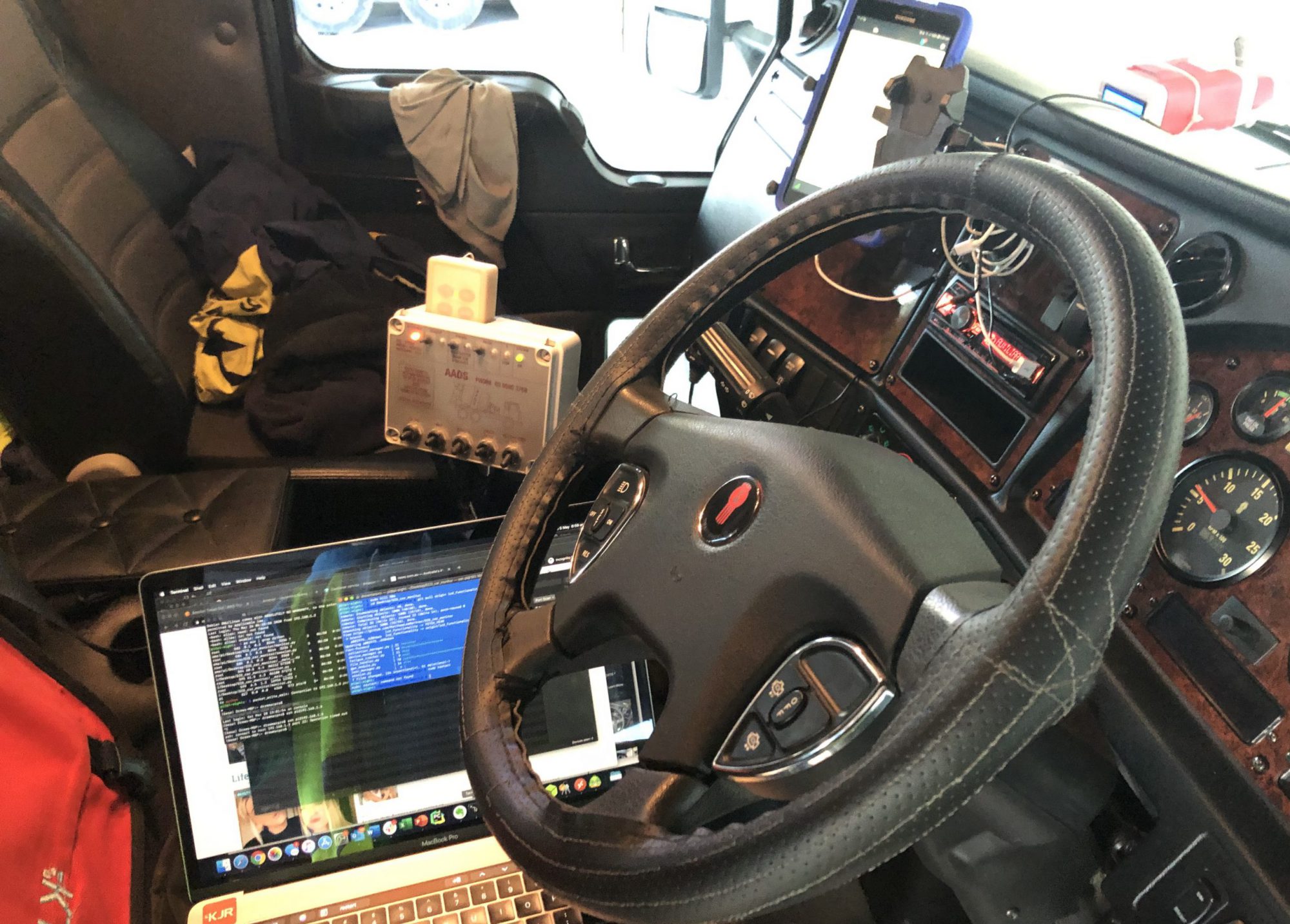The start of 2021 saw us road tripping into Queensland to service the units we installed in the back end of 2020.
Trip 2, Lesson 1: New components force some modifications on the go!
Winning the ICON Grant September 2020 (thanks CBRIN and the ACT Government) meant we had to somewhat rapidly expand out FatigueM8 fleet from 5 to 10 units. Our FatiguM8’s are made up of several “off the shelve” components and as with all technologies every few months there are new versions released, updates, enhancements and as it happens subtle yet important layout changes.
The process we follow to assemble the FatigueM8 compute units is well refined now, after building over 23 prototypes now. The process starts with the installation of the operating system and configuring the various options; next the specific software components are installed and finally the FatigueM8 code base. We then run through a series of connection tests for the ECG unit, GPS and testing the LED lights. When all the tests pass, we assemble the FatigueM8 unit.
It was at the point of assembly that we noticed a subtle, yet important change in the computers layout. In the latest model, the USB and Network ports have been switched (no idea why!). We us the USB port to connect a 3G/4G modem to enable almost realtime up load of data for analysis; and remote connection.


Before (left) and After (right) pictures of FatigueM8 front plate.
Fortunately our prototypes are exactly that, prototypes and allow for quick tweaks without major cost implications. As was the case in Lesson 1 above, a hotel room was able to be converted to a mini-workshop and it was Bunnings to the rescue this time. Grabbing a small push saw and rasp, 3 minutes later we’d extended the USB whole to account for the layout switch. We’ll incorporate this new design into the next FatigueM8 print run.
Trip 2, Lesson 2: What happens when the backup, backups’ fails?
The starting premise of FatigueM8’s steering wheel installation is that the drivers shouldn’t have to do anything other than drive to use the system. To facilitate this we have the ECG wired into the truck’s electrical system, with a battery that is charged when the trucks lights are on. FatigueM8 uses the battery power when then the vehicles lights aren’t on and/or the truck is turned off. The battery is able to power the ECG unit for roughly 5 days and during the year this has worked seamlessly with our trial trucks.
Coming back from the 2020 Christmas break several of our trucks had been off the road for 2 weeks (or there a bouts) and the FatigueM8 systems came back online but had no ECG unit connection. After several days of debugging and speaking to the ECG Unit manufacturer we discovered there is another tiny battery inside the ECG unit itself, which provides power to the internal clock. We discovered that the life of the clock battery is about 5 days and when it goes flat if puts the ECG unit into a “safe state” that requires a hard reset. We’ll thank 2020 for the year that kept on giving for this one 🙂
Trip 2, Lesson 3: Securing the dashboard unit needs some work!
Our FatigueM8 dashboard unit (which contains the compute unit) also has a forward facing camera that we use to capture the road/driving conditions our drivers are operating in; and is designed to sit on the trucks dashboard. This sounds simple enough, but as it turns out there isn’t much consistency in dashboard layouts; even within the same brand and model of truck. Recently I went to check in on a couple of our installed units and found one upside-down! In this instance we’d underestimated the amount of road vibrations coming into the cab and this truck travels several times a day along a dirt road for 50kms.



We’re swapped the unit from the drivers side over to the passenger side of the truck and used a humble cable tie to secure the unit to the air vent and hopefully in place! We’ll check back in a month or so.
When we installed our units wee used a small “occy strap” to secure the unit, but it appears we need a little extra securing. Another of our trial units used Velcro to stick the unit in place, which seams to work well.

We’ll be working on the Dashboard unit over the coming iterations with a focus on securing the unit, as well as making the design of the unit more adaptable to different dashboard configurations.
Until next time, stay safe.

